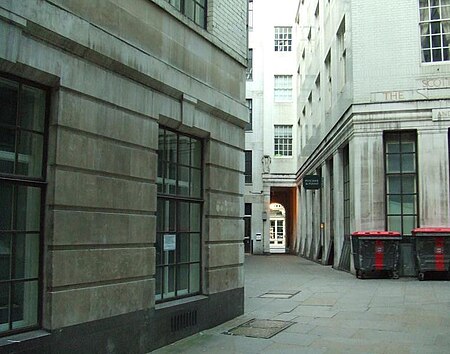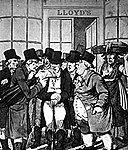Exchange Alley

Exchange Alley or Change Alley is a narrow alleyway connecting shops and coffeehouses in an old neighbourhood of the City of London. It served as a convenient shortcut from the Royal Exchange on Cornhill to the Post Office on Lombard Street and remains as one of a number of alleys linking the two streets. Shops once located in Exchange Alley included ship chandlers, makers of navigation instruments such as telescopes, and goldsmiths from Lombardy in Italy. The 17th and 18th century coffeehouses of Exchange Alley, especially Jonathan's and Garraway's, became an early venue for the lively trading of shares and commodities. These activities were the progenitor of the modern London Stock Exchange. Similarly, Lloyd's Coffee House, at No. 16 Lombard Street but originally on Tower Street, was the forerunner of Lloyd's of London, the Lloyd's Register and Lloyd's List. The nearest London Underground station is Bank and the closest mainline railway station is Cannon Street.
Excerpt from the Wikipedia article Exchange Alley (License: CC BY-SA 3.0, Authors, Images).Exchange Alley
Change Alley, City of London
Geographical coordinates (GPS) Address Nearby Places Show on map
Geographical coordinates (GPS)
| Latitude | Longitude |
|---|---|
| N 51.513055555556 ° | E -0.086944444444444 ° |
Address
Change Alley
Change Alley
EC3V 9AH City of London
England, United Kingdom
Open on Google Maps










